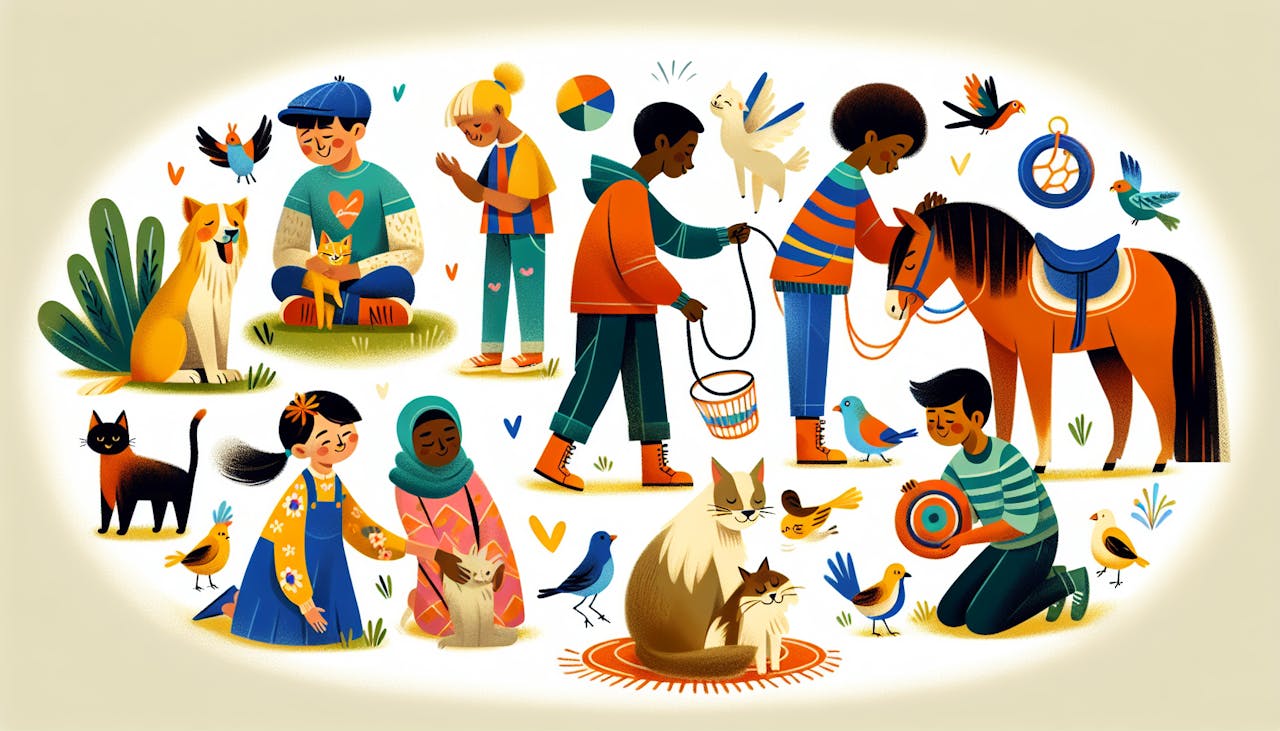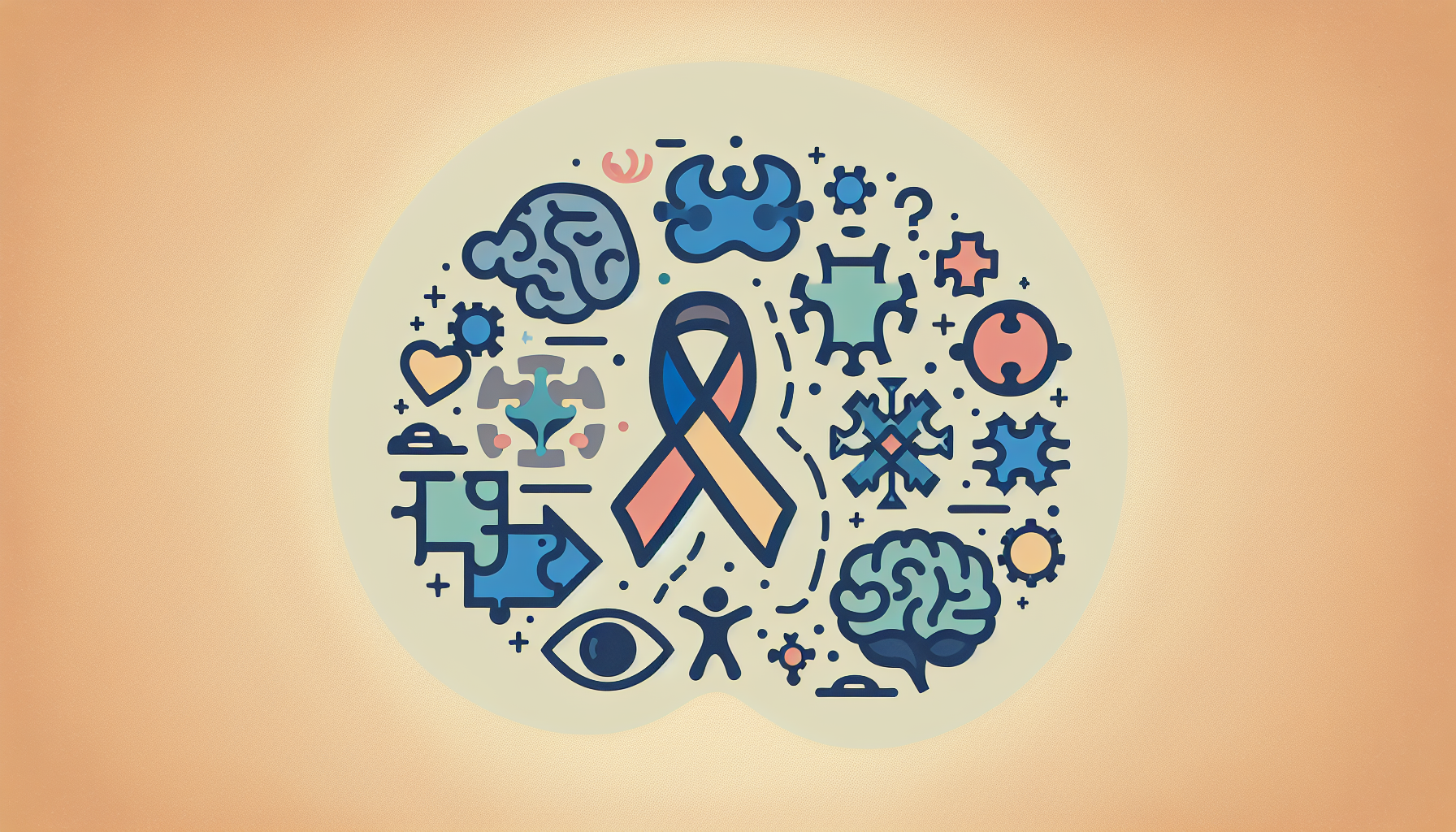How To Talk About Autism
Discover the art of talking about autism with empathy and understanding. Learn to embrace the unique stories, strengths, and experiences that shape each individual.
.jpeg)
Understanding Autism
To effectively explain autism to others, it's important to have a clear understanding of what autism is and the common characteristics associated with it.
What is Autism?
Autism, or Autism Spectrum Disorder (ASD), is a neurodevelopmental disorder that affects how a person perceives and interacts with the world around them. It is characterized by difficulties in social interaction, communication, and repetitive behaviors. Autism is a spectrum disorder, which means that it manifests differently in each individual, with varying degrees of severity.

Common Characteristics of Autism
While autism presents differently in each person, there are some common characteristics that are often associated with the condition. These characteristics can vary in intensity and may include:
Characteristic and Description
- Social Challenges: Difficulties in understanding and engaging in social interactions, such as maintaining eye contact, understanding social cues, and developing relationships.
- Communication Differences: Challenges in both verbal and non-verbal communication, such as delayed speech development, difficulty initiating or sustaining conversations, and literal interpretation of language.
- Sensory Sensitivities: Heightened or decreased sensitivity to sensory stimuli, such as sounds, lights, textures, or tastes. This can lead to sensory overload or seeking sensory stimulation.
- Repetitive Behaviors: Engaging in repetitive movements or behaviors, such as hand-flapping, rocking, or rigid adherence to routines. These behaviors are often used as a way to self-regulate or cope with overwhelming situations.
While these characteristics are commonly associated with autism, each individual's experience with autism is unique. Some individuals may exhibit these characteristics to a greater extent, while others may have fewer challenges in certain areas. It's crucial to approach each person with autism as an individual, recognizing their strengths and challenges, and understanding that their experience may differ from others with autism.
By understanding the basics of autism and the common characteristics associated with it, you can effectively explain autism to others and foster a greater understanding and acceptance of individuals on the autism spectrum.
Why It's Important to Explain Autism
When it comes to autism, explaining it to friends and family can play a crucial role in fostering understanding, empathy, and acceptance. By taking the time to educate others about autism, we can work towards reducing stigma and dispelling misconceptions surrounding this neurodevelopmental disorder.
Building Understanding and Empathy
One of the primary reasons why it's important to explain autism is to build understanding and empathy among friends and family. Autism is a complex and diverse spectrum, and by providing information and insights, we can help others grasp the unique challenges and strengths that individuals with autism may experience.
By increasing understanding, we can encourage a more inclusive and accommodating environment for individuals with autism. It allows friends and family to approach interactions with empathy and patience, recognizing that everyone's experiences and perspectives may differ.
Reducing Stigma and Misconceptions
Explaining autism also helps in reducing the stigma and misconceptions often associated with the disorder. Many people hold misconceptions about autism due to limited exposure or inaccurate portrayals in media. By providing accurate information, we can challenge these misconceptions and promote a more accurate understanding of autism.
Reducing stigma is crucial as it helps create a supportive and accepting community for individuals with autism and their families. It can encourage open-mindedness and foster inclusive attitudes, ultimately benefiting the overall well-being and quality of life for those on the autism spectrum.
Promoting understanding and reducing stigma are the key reasons why explaining autism to friends and family is essential. By taking the initiative to educate others, we can contribute to a more compassionate and inclusive society that embraces and supports individuals with autism.
Preparing to Explain Autism
Before engaging in conversations about autism with friends and family, it's important to adequately prepare yourself. This preparation will not only enhance your ability to explain autism effectively but also foster a deeper understanding and connection between you and your loved ones. Here are two essential steps to take when preparing to explain autism:
Educate Yourself First
To effectively explain autism, it's crucial to have a solid understanding of the topic yourself. Educate yourself about autism by reading books, articles, and reliable online resources. Familiarize yourself with the current research, terminology, and common misconceptions surrounding autism. By becoming well-informed, you can confidently address questions and concerns raised by your friends and family.
Consider exploring resources such as support groups, autism organizations, and professional guidance. These sources can provide valuable information and insights into the experiences of individuals with autism and their families. Additionally, they can offer practical strategies and advice for explaining autism to others.
Reflect on Your Own Experience
Reflecting on your own experiences with autism can provide valuable insights and personal anecdotes to share with friends and family. Consider the unique challenges, strengths, and perspectives you or your loved one with autism may have encountered. Reflecting on these experiences can help you articulate the impact of autism on individuals and their families more effectively.
You can also think about the strategies and accommodations that have been helpful in navigating daily life with autism. Sharing these insights with others can provide them with a clearer understanding of the specific needs and strengths associated with autism.
By educating yourself and reflecting on your own experiences, you will feel more prepared and confident when discussing autism with friends and family. Remember, the goal is to promote understanding, empathy, and open dialogue.
Approaches to Explaining Autism
When it comes to explaining autism to friends and family, it's important to choose effective approaches that promote understanding and empathy. Here are three approaches that can help make the conversation about autism more accessible and relatable.
Start with the Basics
Begin by providing a simple and clear explanation of what autism is. Break down the core characteristics of autism, such as difficulties with social interactions, communication, and sensory sensitivities. Use straightforward language and avoid jargon to ensure that your friends and family can easily grasp the fundamental aspects of autism.
Core Characteristics of Autism
- Challenges with social interactions
- Communication difficulties
- Sensory sensitivities
Use Analogies and Metaphors
Analogies and metaphors can be powerful tools to help others understand autism. By comparing autism to something familiar, you can make complex concepts more relatable. For example, you could explain that social interactions for someone with autism can feel like trying to navigate a foreign language or decipher a puzzle. Analogies like these can help your loved ones visualize and empathize with the challenges faced by individuals on the autism spectrum.
Provide Personal Examples
Sharing personal examples can make the conversation about autism more meaningful and relatable. Share stories or experiences that illustrate the unique perspectives and struggles of individuals with autism. By providing concrete examples, you can help your friends and family gain insight into the daily life and experiences of someone on the autism spectrum.
Remember to tailor your approach to the individual you are speaking with, as everyone has different prior knowledge and levels of understanding about autism. Adapt your explanations, analogies, and personal examples to ensure that they resonate with the specific person you are talking to.
By using these approaches, you can make the topic of autism more accessible and foster a deeper understanding among your friends and family. Remember that patience, open-mindedness, and a willingness to answer questions are key to creating a supportive and inclusive environment for individuals with autism and their loved ones.
Tips for Talking to Friends and Family
When explaining autism to friends and family, effective communication plays a crucial role in fostering understanding and support. Here are some tips to help you navigate these conversations with care and empathy.
Choose the Right Time and Place
Selecting an appropriate time and place for the conversation can contribute to its success. Find a quiet and comfortable setting where everyone can focus and engage without distractions. Consider the mood and emotional state of those involved, ensuring that everyone is receptive and open to the discussion. By creating a safe and relaxed environment, you can promote a more meaningful and productive conversation.
Be Patient and Understanding
Patience and understanding are key when discussing autism with friends and family. Remember that people may have different levels of knowledge and prior exposure to autism. Allow them time to process the information and ask questions. Be prepared to address any concerns or misconceptions they may have. It's important to approach the conversation with empathy, recognizing that everyone may have their own perspectives and emotions surrounding the topic.
Encourage Questions and Open Dialogue
Encouraging questions and facilitating open dialogue is essential in building understanding and fostering support. Let your friends and family know that their questions are welcome and that you are open to discussing any concerns or uncertainties they may have. Answer questions honestly and provide accurate information to dispel any misconceptions. By fostering open dialogue, you can create a space for mutual learning and growth.
It's important to remember that each conversation may be unique, and the approach may vary depending on the individuals involved. Tailor your communication style to suit the needs and preferences of your friends and family members. By approaching these discussions with patience, empathy, and a willingness to engage, you can help create a supportive network that understands and embraces autism.
Additional Resources and Support
When it comes to explaining autism to friends and family, it can be helpful to provide them with additional resources and support. These resources can offer further insight and understanding, allowing your loved ones to gain a deeper appreciation for autism and how it may impact you or someone you care for. Here are some avenues to explore:
Support Groups and Organizations
Support groups and organizations dedicated to autism can be a valuable source of information and community. These groups often provide a platform for individuals with autism, caregivers, and allies to connect, share experiences, and learn from one another. They may offer educational materials, workshops, and events that can help your friends and family members better comprehend and support individuals with autism.
Resource and Description
- Autism Speaks: A leading autism advocacy organization that provides a wealth of resources, support, and information for individuals with autism and their families.
- National Autism Association: An organization focused on raising awareness, providing support, and advocating for individuals with autism and their families. They offer resources, support groups, and educational materials.
- Local Autism Support Groups: Check with your local community centers, hospitals, or autism clinics to find support groups in your area. These groups often provide a safe space for individuals to share their experiences and connect with others facing similar challenges.
Books and Online Materials
Books and online materials can be an accessible and informative way for your friends and family to learn more about autism. There are numerous books, articles, and websites available that cover various aspects of autism, including personal stories, strategies for understanding and supporting individuals with autism, and practical tips for communication and inclusion.
Resource and Description
- The Reason I Jump: by Naoki Higashida A captivating book written by a nonverbal individual with autism, offering a unique perspective on the experience of living with autism.
- Autism Society: The Autism Society website provides a range of resources, including articles, fact sheets, and toolkits, to help educate friends and family about autism.
- Ten Things Every Child with Autism Wishes You Knew: by Ellen Notbohm A book that provides valuable insights and practical advice for parents, teachers, and loved ones of individuals with autism.
Professional Guidance
Sometimes, seeking professional guidance can be beneficial when explaining autism to friends and family. Professionals, such as psychologists, therapists, or autism specialists, can offer expert knowledge and guidance to both you and your loved ones. They can provide personalized strategies, answer specific questions, and help facilitate open and productive conversations about autism.
Resource and Description
- Autism Educators: Autism educators, therapists, and specialists can provide individualized guidance and support for you and your loved ones. They can offer strategies for effective communication, understanding, and inclusion.
- Psychologists or Counselors: Mental health professionals with experience in autism can provide guidance and support in navigating the emotional aspects of explaining autism to friends and family. They can offer strategies for managing stress, promoting self-care, and fostering healthy relationships.
By sharing these additional resources and support options with your friends and family, you can empower them to further educate themselves and gain a deeper understanding of autism. This knowledge can foster empathy, reduce stigma, and ultimately strengthen the bonds between you and your loved ones.
Summary
In the heart of conversations about autism, what resonates most is the genuine understanding that every individual is a unique story, deserving to be heard and embraced. As we conclude our exploration on how to talk about autism, let's remember that it's not just about sharing facts and figures; it's about fostering empathy, compassion, and creating a space where everyone's narrative is valued.
Talking about autism is an art of weaving connections, dismantling stereotypes, and embracing the beautifully diverse spectrum of human experiences. It's about recognizing the strengths, celebrating the victories, and understanding that each person, whether on or off the spectrum, adds a unique hue to the canvas of our shared humanity.
As we navigate these conversations, let's carry with us the warmth of acceptance, the power of education, and the simple truth that kindness and understanding can bridge any gap. In talking about autism, we're not just exchanging words; we're building bridges of connection, forging a path toward a world where differences are not just accepted but cherished.
Sources
- https://www.autism.org.uk/contact-us/media-enquiries/how-to-talk-and-write-about-autism
- https://www.ambitiousaboutautism.org.uk/information-about-autism/understanding-autism/how-to-talk-about-autism
- https://app2vox.com/resources/how-to-talk-about-autism
Find More Articles
Contact us
North Carolina, Tennessee, Nevada, New Jersey, Utah, Virginia
New Hampshire, Maine
Massachusetts, Indiana, Arizona, Georgia
.avif)














































.jpeg)









.jpeg)
.jpeg)



.jpeg)
















.jpeg)
.jpeg)



.jpeg)
.jpeg)











.jpeg)



.jpeg)
